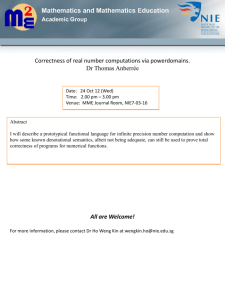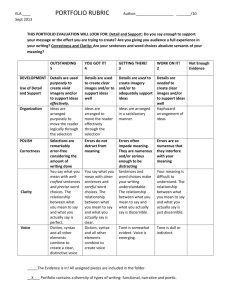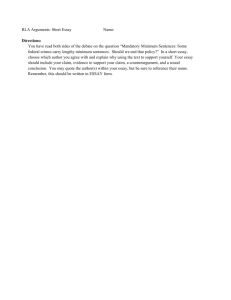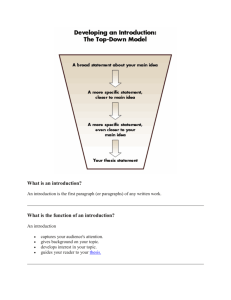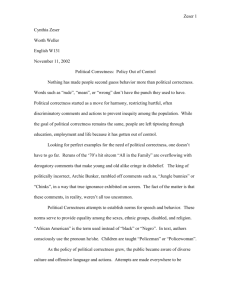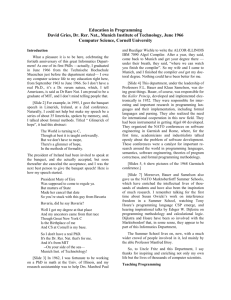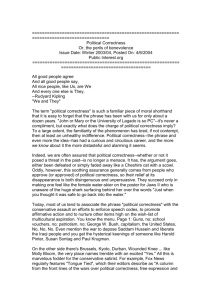Lesson 6: Strategies for Improving Correctness and Style Lesson
advertisement
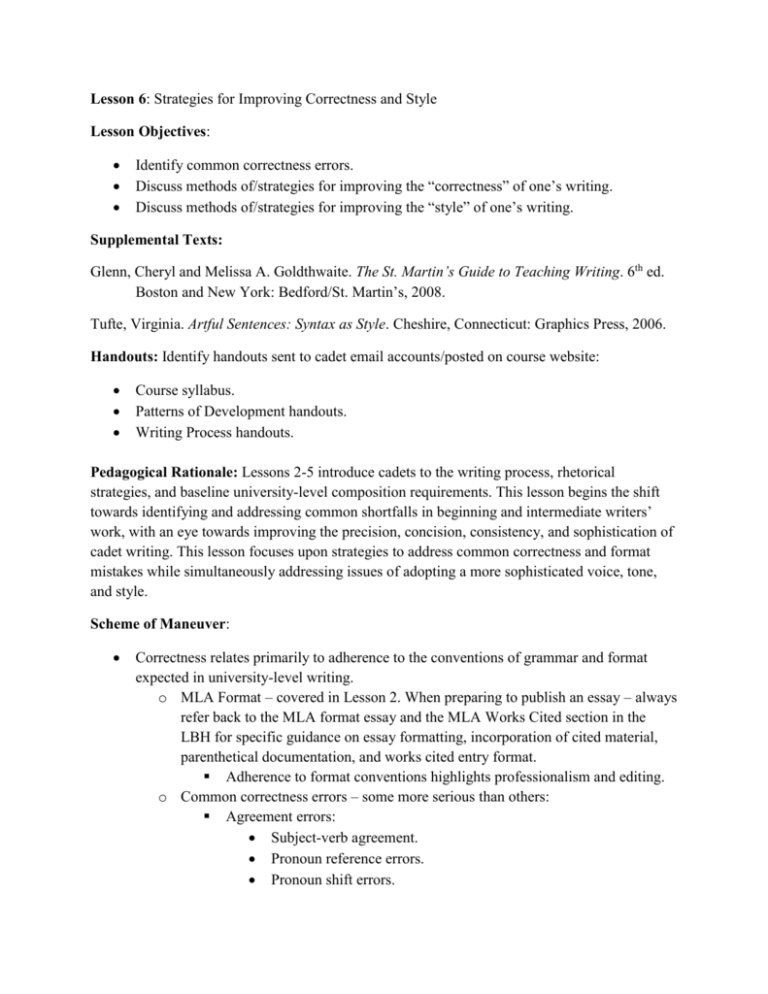
Lesson 6: Strategies for Improving Correctness and Style Lesson Objectives: Identify common correctness errors. Discuss methods of/strategies for improving the “correctness” of one’s writing. Discuss methods of/strategies for improving the “style” of one’s writing. Supplemental Texts: Glenn, Cheryl and Melissa A. Goldthwaite. The St. Martin’s Guide to Teaching Writing. 6th ed. Boston and New York: Bedford/St. Martin’s, 2008. Tufte, Virginia. Artful Sentences: Syntax as Style. Cheshire, Connecticut: Graphics Press, 2006. Handouts: Identify handouts sent to cadet email accounts/posted on course website: Course syllabus. Patterns of Development handouts. Writing Process handouts. Pedagogical Rationale: Lessons 2-5 introduce cadets to the writing process, rhetorical strategies, and baseline university-level composition requirements. This lesson begins the shift towards identifying and addressing common shortfalls in beginning and intermediate writers’ work, with an eye towards improving the precision, concision, consistency, and sophistication of cadet writing. This lesson focuses upon strategies to address common correctness and format mistakes while simultaneously addressing issues of adopting a more sophisticated voice, tone, and style. Scheme of Maneuver: Correctness relates primarily to adherence to the conventions of grammar and format expected in university-level writing. o MLA Format – covered in Lesson 2. When preparing to publish an essay – always refer back to the MLA format essay and the MLA Works Cited section in the LBH for specific guidance on essay formatting, incorporation of cited material, parenthetical documentation, and works cited entry format. Adherence to format conventions highlights professionalism and editing. o Common correctness errors – some more serious than others: Agreement errors: Subject-verb agreement. Pronoun reference errors. Pronoun shift errors. Sentence boundary errors: Sentence fragments. Comma splices. Run-on/fused sentences. Comma errors. Dangling modifiers. Other “errors”: Split infinitives. Passive voice. o Simply ensuring your essay has none of these errors alone will improve its professionalism and effectiveness. o Editing should identify these errors – especially if you read your essay backwards by sentence as we discussed in Lesson 5. Reading the sentence out of context allows you to focus on its correctness rather than what it hopes to accomplish. Style: Many students think “style” is mysterious and hard to identify/assess much less teach. And while it is a bit more nuanced than correctness or substance – there are strategies to improve one’s style. o Style and content are, of course, heavily dependent upon one another. o What, exactly, is style? Virginia Tufte has a wonderful definition, of sorts. “Style,” she insists, “gives words the power to relate to each other in a sequence, to create rhythms and emphasis, to carry meaning – of whatever kind – as well as glow individually in just the right place” (Tufte 9). Michael Riffaterne sees style as providing one’s writing with “expressive, affective, aesthetic emphasis.” Wayne Booth – a mature style ensures “rhetorical balance between authoraudience-subject” (Glenn and Goldthwaite 206). o How does one develop a “style”? Or…what impacts one’s style? Life experiences Formative influences Personality/individuality One’s own “internal language” Reading! Reading! Reading! “The more models and styles a writer knows or is aware of, the more raw data there are to feed the language-generating mechanism and the more informed are the choices that can be made both intuitively and consciously” (Glenn and Goldthwaite 201). “Style is the hardest canon to teach, linked as it is to reading” (201). o Continuum of style: formal/literary informal/colloquial vulgar/illiterate. o One does not develop style through osmosis; one must practice…. READING and writing. o Some scholars recommend copying by hand 10-15 line passages of writing from writers whose writing you admire. Read first, then copy. Pay attention to the sentence structures, syntax, etc. o Or – model your sentences after sentences you admire…. Use their structure to create your own sentences. Over time – you will begin to emulate subconsciously. o An over abundance of adjectives and adverbs does not equal sophisticated style. o An over abundance of semi colons does not equal sophisticated style. o Vary your sentence structures: Verb forms – maximize use of active, dynamic verb forms. Use forms of the verb “to be” for simple, declarative statements of fact – or to balance out longer, more complex sentences. Vary sentence lengths. Follow short sentences with long. Or use short sentences in a series to solidify a point. o Use transitional phrases. See LBH 88-89 for list. o Use sophisticated diction – but be careful not to go “thesaurus crazy”…. Improve your vocabulary the “natural” way – by reading! o Note how diction/syntax is impacted by: gender, geography, ethnicity, profession, age. (Examples?). o See LBH, 378-412 for additional resources/ideas Very useful section. o Walk through 378-412 with cadets. Looking Ahead: Lesson 7 – In Progress Review: Addressing and Remediating Shortfalls o Study, understand, and be prepared to discuss: “Agreement,” LBH 301-315. Ortega y Gasset, “The Greatest Danger, The State,” WI 121-139. o Complete and bring Critical Reading Framework for Ortega y Gasset to class. o Come to class with questions prepared for issues/content you do not understand.

